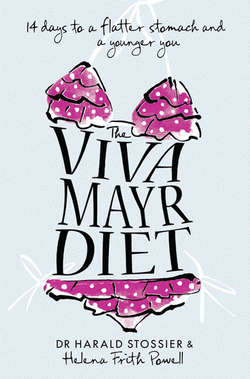Читать книгу The Viva Mayr Diet: 14 days to a flatter stomach and a younger you - Dr Stossier Harald - Страница 29
Cooking the Viva Mayr way
ОглавлениеOnce you know what to eat, how are you meant to cook it? The goal of cooking the Viva Mayr way is to create a dish that tastes good, while at the same time preserving the food’s nutrients. Some methods are better than others because they make foods easier to digest. In many cases, food preparation is essential for us to be able to digest a food at all. Have you ever tried eating raw dried pasta?
By far the best way to cook vegetables is to steam them, and the best way to cook meat is to grill it. Fish can be poached, steamed or grilled. If you do end up frying, use only warm-pressed oils. Palm oil and coconut oil are especially suitable, because they have a very high smoke point of between 160°C and 180°C (320°F and 350°F), which means they can be heated without destroying the valuable nutrients. Heating cold-pressed oils turns them into trans fats – the very worst type of fats you can eat. If you do choose to cook with olive oil, or vegetable or seed oils, choose warm-pressed varieties. The fatty acids they contain will not be altered by cooking.
Contrary to what most other diet books will tell you, butter is fine. Butter contains milk fat, which has high levels of essential fatty acids, required for the brain and immune system. But don’t heat butter. At the most, butter can be melted gently and used to coat vegetables. Heating any more than this destroys butter and robs it of its health benefits, by destroying the healthy fatty acid chains.
Dr Stossier suggests we all cook using more herbs. They are excellent for supporting the digestive system, they taste great, and they can add flavour to just about anything you eat. Think about using herbs in a more Mediterranean way. For example, use fresh mint in a salad, as you would in Greece, or make fresh pesto sauce with basil. Basil is extremely versatile and perks most things up; add it to some steamed vegetables with some olive oil to finish off, and suddenly you have a tasty and nutritious meal. Any boring salad can be spiced up with a bit of coriander. Next time you eat salmon, pop some dill on top.
In terms of equipment, the only kitchen appliance in which you need to invest is a steamer. If you’re not yet convinced about the benefits of steaming food, just use a colander over a saucepan. But bear in mind that steaming preserves essential nutrients in food, such as the antioxidants, flavonoids, vitamins and minerals in vegetables.
You will also need a food processor or mixer for some of the recipes; if you don’t have one and don’t want to buy one, then do what your great-grandmother would have done and use a fork – and some wrist power!
